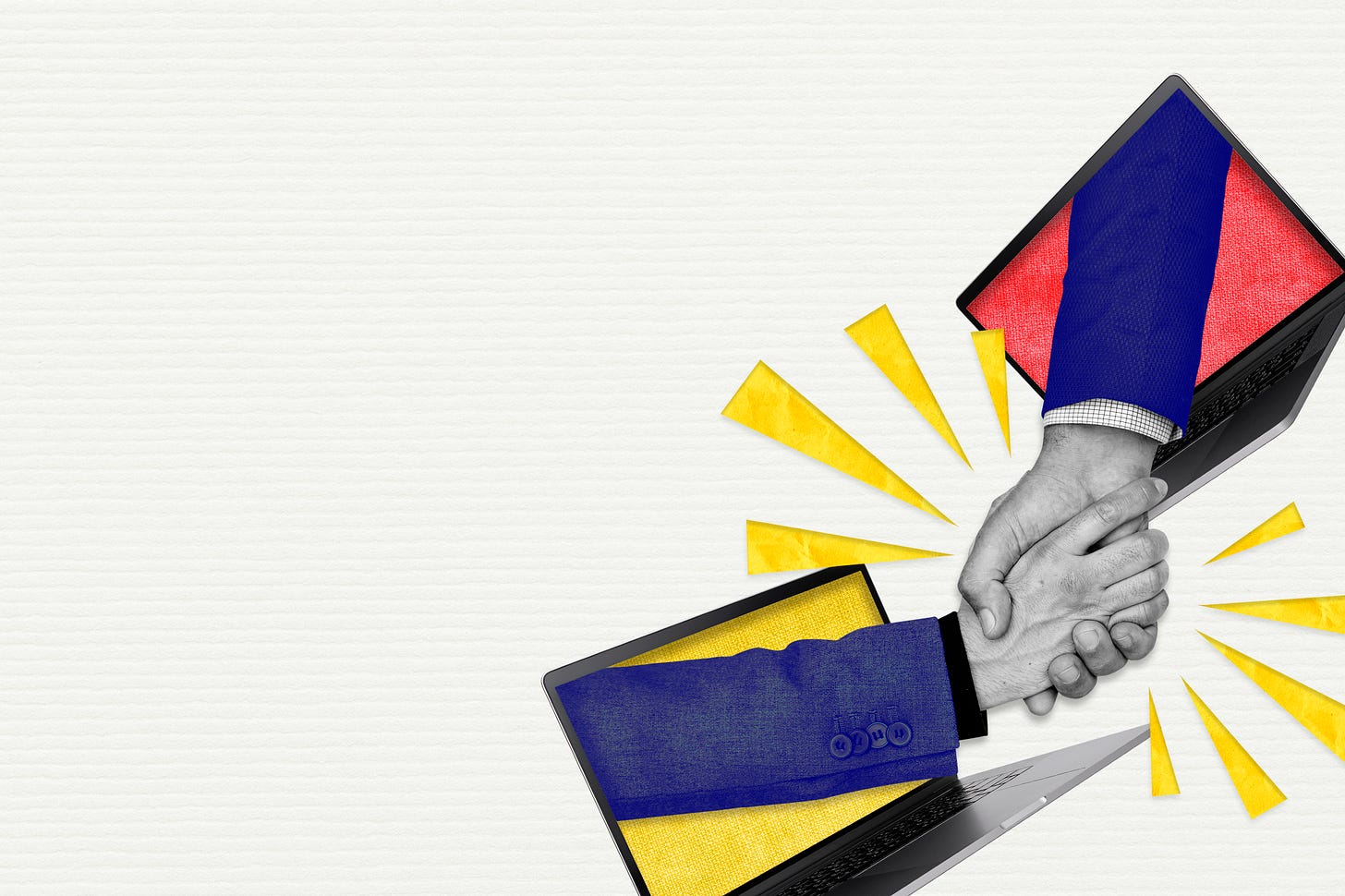Remarketing in 2025: Cookieless Retargeting & Chatbots That Feel Human
Guest article by Vikramsinh Ghatge
In today’s hyper-competitive landscape, companies aren't just looking to spend more—they're looking to spend smarter. If it feels like your ads are throwing a party and no one’s showing up, you're not alone. Marketing strategies are evolving fast, and three major trends are reshaping the way we connect with audiences:
Remarketing in 2025
Cookieless Retargeting
Chatbots: Almost Human?
Let’s dive into what’s changing, and how the smartest brands are staying ahead.
Remarketing in 2025: Precision Over Promotion
Technology today isn’t just about automation—it’s about hitting the bullseye. Programmatic advertising is now a core strategy for B2B marketers, delivering smarter targeting and better ROI.
1. Laser-Targeting
No more casting a wide net. Programmatic lets you target by company size, industry, and on-site behavior. If a decision-maker is reading your case studies, they’ll see your ad—right when it matters most.
Want to go deeper? Account-Based Advertising (ABA) lets you tailor campaigns to specific companies and buying stages.
2. Real-Time Optimization
Traditional ads are "set and forget." Programmatic campaigns are live, responsive, and adaptable. Adjust messaging on the fly based on performance data like CTR, CPA, and engagement rates.
3. Personalization at Scale
With AI and first-party data, your ads dynamically match each user’s behavior. Product demo? Testimonial? Free trial? Let the system deliver the right message—automatically.
4. Omnichannel Reach
Today’s buyers move across LinkedIn, CTV, blogs, and email. Programmatic ensures your brand appears wherever they go—creating consistent, memorable touchpoints.
5. Spend Smarter, Not Harder
You only pay for impressions that count. Automated bidding removes guesswork, optimizes budget, and reduces spend on unqualified audiences.
6. Retargeting Warm Leads
Most buyers don’t convert on the first touch. Programmatic helps you stay top-of-mind, gently nudging interested leads back to you—without being invasive.
7. Ad Fraud Protection
Bots are everywhere, but the best platforms now have fraud detection built-in, ensuring your ads reach actual people.
Cookieless Retargeting: The New Privacy-First Playbook
The cookie is crumbling. With stricter privacy laws and growing user awareness, marketers must adopt new, respectful methods of retargeting. Here’s how the best are doing it:
1. First-Party Data is King
Instead of relying on third-party cookies, brands are collecting consented data through sign-ups, surveys, and CRM tools. It’s ethical, valuable, and user-approved.
2. Server-Side Tracking
This newer approach gathers data from your own server—bypassing ad blockers and browser restrictions. Tools like Meta’s CAPI and Google’s server-side solutions enable accurate attribution without privacy violations.
3. Privacy-Focused APIs
APIs like Google’s Topics API categorize users by interest instead of individual tracking. The Attribution API offers insights without collecting personal information.
4. Contextual Advertising
Targeting based on content, not cookies. If someone’s reading about luxury watches, show them relevant ads—no past browsing history needed.
5. AI & Machine Learning
AI models now predict what users want based on real-time behavior—adjusting ad content dynamically, with zero dependence on cookies.
6. Landing Page Retargeting
If someone engages with your content (like downloading a guide or watching a demo), they’re added to a custom audience—ready for retargeting via email, ads, or social.
7. Trust is the New Currency
Transparent consent management builds long-term loyalty. Even better? Zero-party data—where users tell you what they want via polls, quizzes, and preference centers.
8. Diversify Your Channels
Avoid over-reliance on a single platform. Use email, social media, QR codes, SMS, and even direct mail to remarket across multiple touchpoints.
Chatbots in 2025: Almost Human?
Remember when chatbots were robotic and unhelpful? In 2025, they’re intelligent, empathetic, and—thanks to AI—shockingly lifelike.
1. Understanding Language and Context
Modern chatbots, powered by NLP, interpret not just words but tone. Whether you're sarcastic or frustrated, they understand and respond appropriately. Tools like ChatGPT Voice and Google Gemini make these bots feel truly conversational.
2. Emotional Intelligence
With sentiment analysis, bots detect mood and adapt their tone—making them effective in emotionally sensitive sectors like healthcare and support.
3. No-Code Bot Building
Platforms like Kommunicate enable businesses to create sophisticated bots without coding—drag, drop, deploy.
4. Handling Complex Tasks
Today’s bots can book meetings, process service tickets, and manage workflows—freeing your team to focus on higher-value tasks.
5. Hyper-Personalization
Bots now remember previous chats, analyze behavior, and tailor suggestions. It’s personal, relevant, and feels organic—not creepy.
6. Seamless Payment Integration
Chatbots now support secure, in-chat payments and transactions, creating frictionless e-commerce experiences.
7. Blockchain-Powered Security
In sectors like finance and healthcare, blockchain-backed bots offer unmatched data integrity and security.
8. Real-Time Language Translation
Multilingual bots translate conversations instantly—empowering businesses to serve global audiences effortlessly.
9. Continuous Learning
AI-powered bots learn from each interaction, constantly improving their tone, accuracy, and helpfulness.
10. Brand Reputation Management
Social media bots can now monitor brand mentions, respond to issues in real time, and defuse PR risks before they escalate.
Final Thoughts
The marketing playbook is changing. Remarketing in 2025 is no longer about who can shout the loudest, but who can listen the best. Privacy-first personalization, intelligent retargeting, and empathetic chatbots are shaping a new era of connection and trust.
Brands that adopt these strategies aren’t just keeping up—they’re leading.


